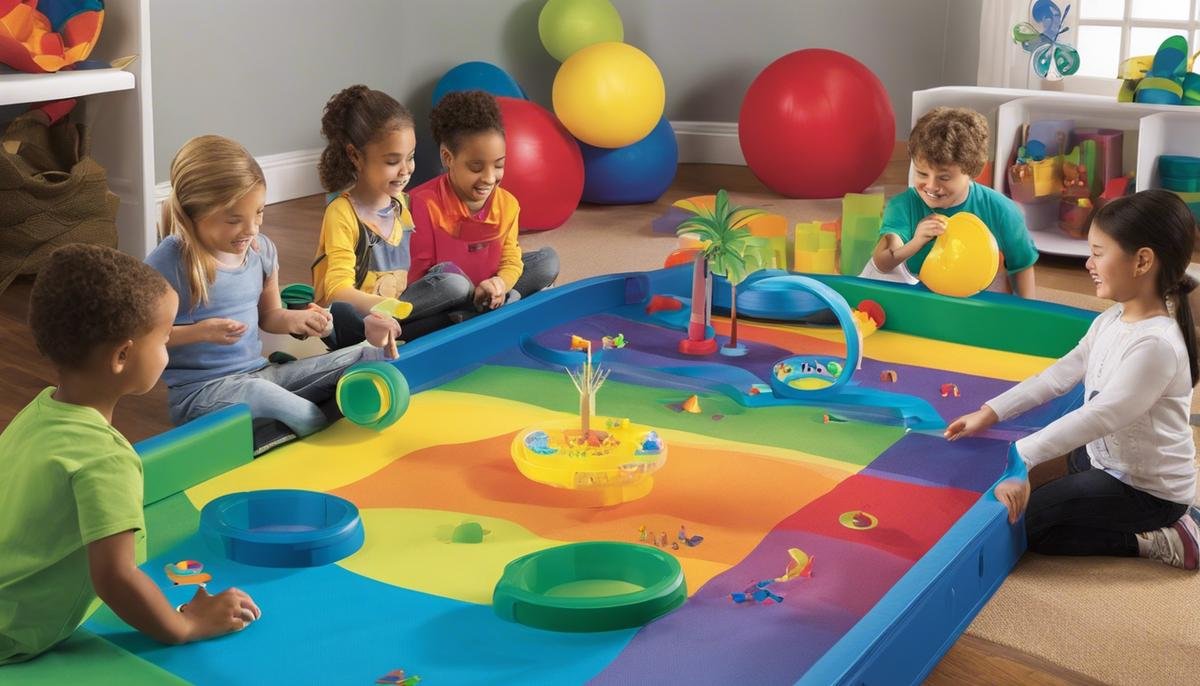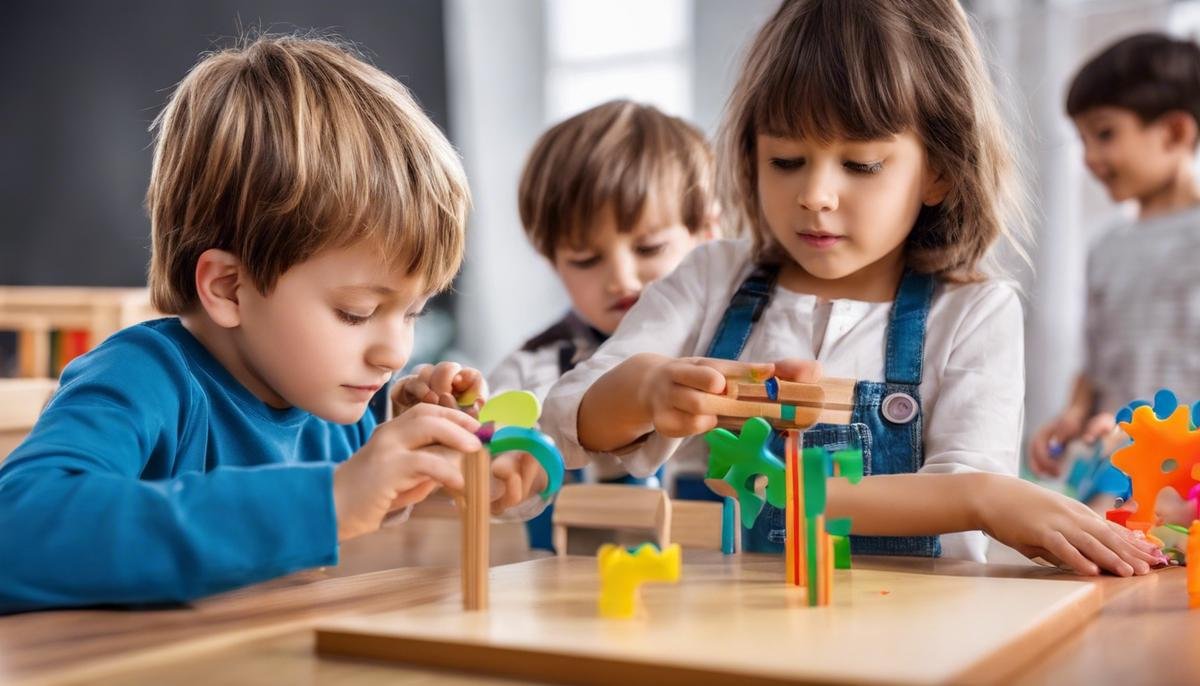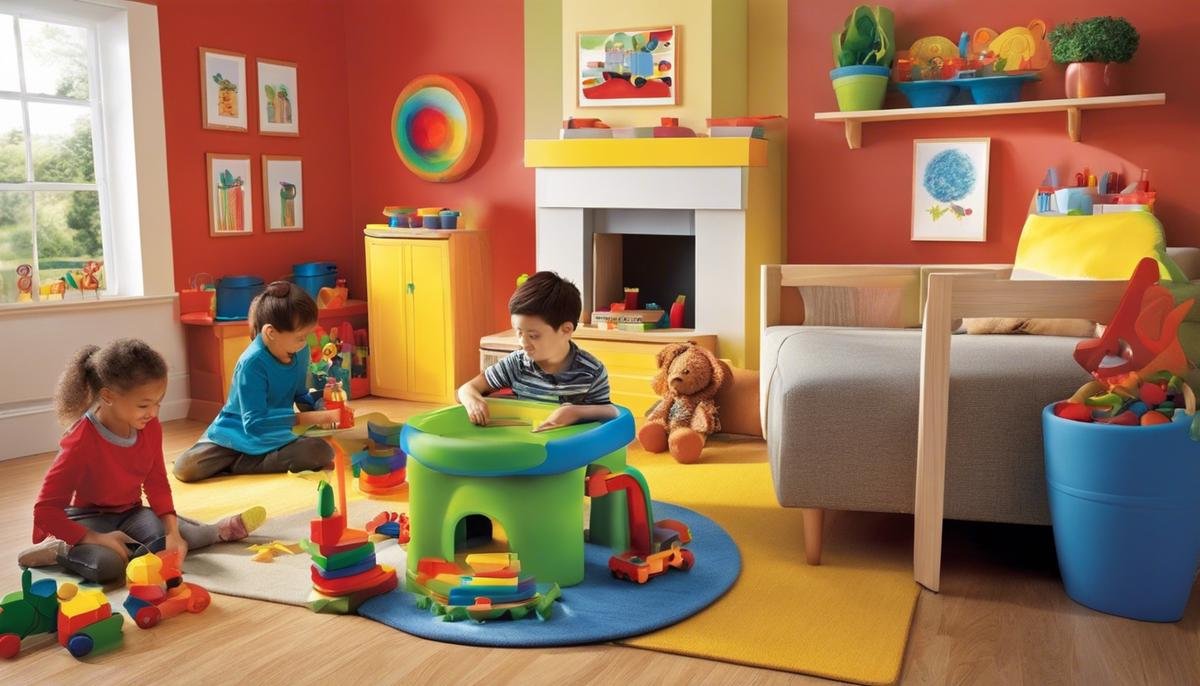
In the vast spectrum of neurodiversity, autism stands out as a condition that, while unique in its impact, offers opportunities for truly individualized and transformative learning approaches. One remarkable method is multisensory learning, where a child’s strengths are magnified and their deficits mitigated via engaging multiple senses. The interconnected elements of sight, sound, touch, smell, and taste present each child with an enriched, tailored learning experience, and this process has proven to be particularly effective in helping children with autism to better grasp their world. This essay seeks to delve into the nature of autism, giving readers a deeper understanding of the condition and the ways that multisensory learning can be harnessed to unlock a child’s potential. It will also give a glimpse into the future, shedding light on the most anticipated multisensory techniques for autism that 2023 has to offer, bringing revelation and excitement to caregivers and educators alike.
Understanding Autism and Multisensory Learning
Enhancing Learning Experiences for Children with Autism Using Multisensory Techniques
The world of autism is incredibly diverse, with each child experiencing their own set of unique strengths and challenges. Embracing this diversity brings the realization that traditional teaching methods may not effectively reach every child, particularly those living with autism. Parents, teachers, and caregivers can all recognize the complexities of autism and the impact it has on a child’s learning process. But, there’s good news. Multisensory learning can be a game-changer for children with autism.
Autism, as a neurodevelopmental disorder, directly affects a child’s learning experiences in several ways. It hones in on three key areas – communication, social interaction, and cognitive function. Autistic children may struggle with receptive and expressive language, making it difficult for them to grasp complex concepts or convey their understanding. Maneuvering social situations can also cause anxiety and confusion, as they may have a hard time decoding facial expressions, body language, and social norms. Cognitively, children with autism may have a unique range of interests and struggle with flexibility, often finding it challenging to switch from one task to another.
Given these challenges, how can multisensory learning help?
Multisensory learning is an approach that actively engages a child’s senses during the learning process. It includes using sight, hearing, touch, and movement in tandem to impart education in different forms. It can take many forms, such as sensory bins, tactile letters, movement activities, or using musical instruments, to name a few.
This concept of “learning by doing” is especially beneficial for autistic children as they tend to learn better through experience rather than traditional means of instruction. Multisensory techniques help children make stronger connections between their body and brain, foster better memory recall, and create a hands-on learning environment that’s inclusive and fun.
In practice, this could mean using manipulatives in math to reinforce counting or teaching the alphabet using sandpaper letters for enhanced tactile feedback. Project-based learning, field trips, or involving children progressively in household chores can provide both sensory experiences and meaningful life skills.
Using multisensory learning can also help autistic children better manage sensory issues. For instance, tactile experiences can help improve a child’s tolerance to various textures, while gentle background music can help them to calm and focus.
It’s crucial that this isn’t a one-size-fits-all approach – each child’s preferences, sensitivities, strengths, and challenges must be considered while planning multisensory learning opportunities. Remember, what works great for one child might not the same for another.
Adopting a multisensory learning approach, isn’t hard, but it does require patience, creativity, and an open mind. Our children are naturally curious and willing learners, and our job as parents and educators is to channel that curiosity in the most effective ways possible.
Remember, autism isn’t a boundary. It’s just a different path of learning that can be made fun, engaging, and effective with multisensory approaches. So, embrace the diverse learning styles of these unique little humans and prepare them to reach their highest potential. Let’s dive into multisensory learning and help our children communicate, connect, and comprehend the world beautifully and on their terms.

New Multisensory Techniques for Autism in 2023
Jumping right into it, let’s explore some fresh multisensory techniques to approach Autism in 2023.
These new methods aim to create an expansive sensory-rich environment to aid and enhance the learning experience for children on the spectrum.
Remember, the goal is not to overwhelm an autistic child, but to gently and progressively stimulate their senses in an engaging and educational way.
First off, introducing sensory walks, a fascinating way to explore and engage multiple senses in one go, has been significant.
Sensory walks involve creating a carefully curated path that includes various surfaces to walk on, materials to touch, and different sounds to listen to.
They can be customized to individual needs and interests, thus fostering a positive and explorative learning environment.
Another novel technique is the use of sensory bins.
While they have been used before, there’s a fresh twist to it in 2023.
Sensory bins can now encompass a wide array of themes that mirror the natural progressions of learning.
For instance, seasons can be a theme, where bins are changed and adapted as per spring, summer, fall, and winter, introducing different textures, colors, sounds, and smells associated with each season.
This technique can help children associate and understand time progression and seasonal changes, making learning more relevant and practical.
Next, interactive storytelling goes beyond the traditional read-aloud sessions.
The innovative version uses tactile elements, sound effects, and even scents to make the stories more vivid and engaging.
Children become active participants rather than passive listeners.
This involvement helps strengthen their cognitive development and communication skills.
New multisensory techniques also include technology-based interventions.
Applications and software designed to meet the sensory needs of autistic children have become more advanced.
For example, virtual reality can create immersive multisensory experiences that can be controlled and adjusted to the child’s comfort level.
These digital platforms provide an adjustable stimulatory environment where children can explore at their pace, lessening the risk of sensory overload.
Detailed mindfulness activities are also being integrated, which help cultivate increased awareness and understanding of one’s own sensory experiences.
These activities could involve focusing on the sensations of simple tasks such as brushing teeth, eating a meal, or playing with a toy, emphasizing the textures, sounds, smells, and visual elements involved.
Music and rhythm-based activities have always been a fan favorite.
However, the 2023 twist includes integrating music with other sensory experiences like movement exercises or tactile activities, thus engaging multiple senses.
It’s important to remember that these fresh techniques are simply additional tools to add to your repertoire.
The trick is to experiment, adapt, and find what fits best for each child.
Remember, just as no two children are alike, no two approaches will be identical either.
One might be passionate about sensory walks while another might find solace in detailing their sensory experiences.
It’s all about tailoring to individual needs, striking the perfect balance to facilitate growth, and fostering enjoyable learning experiences.

Hands-On Activities for Multisensory Learning
Parents of children on the autism spectrum often find themselves navigating through a slew of learning strategies to ensure their child’s unique needs are met. In moving forward with this journey, incorporating hands-on activities specifically designed for multisensory learning becomes a crucial step. Here are some fantastic suggestions to create a conducive learning environment for your child.
- Water play is such a beneficial activity that appeals to a child’s sense of touch, sight, and sound. Invite your child to explore different textures by adding various objects into the water – smooth pebbles, squeaky rubber ducks, or sponge toys. You can also experiment with water temperature, demonstrating concepts like hot, cold, warm, making the learning process appealing to their senses.
- Playdough is another multipurpose tool. It’s colorful, malleable and can be infused with essential oils for a calming aromatic experience. Playdough encourages a child to use their hands to mold shapes, strengthening their fine motor skills. Furthermore, it promotes creativity and imagination, creating a meaningful link between tactile involvement and cognitive development.
- Another easily accessible tool is food. Creating edible sensory bins allows children to use sight, touch, taste, and smell. You could use colorful fruit, various shaped pasta, or mix textures like crunchy cereal with soft marshmallows. Activities like these not only help them in understanding the differences in texture and shape but also help diversify their palate.
- Shadow puppet plays can be an excellent activity for visual and auditory learning. Encourage your child to create their puppet stories; this promotes their creativity and enhances their narrative skills. Additionally, this can serve as an expressive outlet for them. Playing with light and shadow can also be a fun way of demonstrating the concept of cause and effect.
- Last but not least, let’s talk about movement-based activities. Dancing, yoga, or simple exercise drills can be beneficial for children with autism. Coordination-based games or activities can enhance both motor skills and proprioceptive sense, helping them understand their body better.
Remember these activities need to be interactive and fun, thereby increasing the odds of your child staying engaged in the learning process. Every child is different, and the key lies in understanding your child’s unique needs and incorporating these methodologies accordingly. It’s about cultivating an environment of acceptance and constant adaptation, facilitating their growth in a world that they experience uniquely. Happy parenting!

Creating a Positive Multisensory Learning Environment at Home
In shaping our homes to become better learning environments for our autistic children, modifying the physical spaces and imbuing them with multisensory learning features is paramount. It’s like designing a home but from a more intricate and thoughtful perspective: our little ones’ comfort and learning stimulation in mind. With love and understanding, let’s explore ways to boost our homes’ capability for multisensory experiential learning.
Firstly, let’s talk about creating personalized learning corners. We could have a ‘touch corner’ where different textures come to play – soft linens, furry throws, shiny sequin cushions – you name it! Similarly, we can have a ‘sight corner’ filled with visually stimulating items like glowing LED lights, colorful wall hangings or even an aquarium! Imagine the world of exploration it opens for our children while strengthening their sensory awareness.
Equally essential are areas for ‘sound.’ White noise machines, wind chimes, or musical instruments can offer a sound-scape that encourages auditory perception in a non-threatening way. Remember, the key is keeping moderation balance for sensitive ears, so don’t overcrowd!
Next consider their play area. Make sure it inspires action and interaction. Games that encourage crawling, marching, or spinning can help children grasp concepts of movement. A bean bag toss, for example, is a fun way to develop hand-eye coordination and understanding of directions. Intriguing isn’t it, how simple home items can bring a whole new world of learning?
Let’s not forget about scents that spark our children’s olfactory senses. Aromatic spices in the kitchen, a pot of lavender in the study, a vanilla-scented candle in the living area — little touches that make our family homes not just spaces of physical comfort, but also a plethora of sensory experiences.
Cooking and mealtime can also be great multisensory learning opportunities. The variety of textures, colors, tastes, and smells gives a whole new dimension to hands-on learning. Guiding them through a cooking process helps refine motor skills, introduces them to different food types, and fosters independence. Even merely playing with food will bring them closer to an understanding of different textures and shapes.
Taking these further, outdoor spaces in our homes like gardens, patios, or verandahs can be utilized for sensory interaction. A sandpit, for instance, provides distinct tactile engagement and can benefit those children who are tactile defensive. Likewise, a mini herb garden can help develop an appreciation for different textures, colors, and smells. Even something as simple as splashing around in a kiddie pool can work wonders for a child’s development.
In conclusion, the environment we shape for our little ones can significantly influence their learning journey. Modifying our homes to make them more conducive for multisensory learning won’t just benefit our autistic children, but ultimately, the whole family as well. It’s about fostering understanding, accepting differences, and celebrating every small achievement. Remember, every step taken is progress, every moment shared is precious, and every chance we get to make a difference in their lives is a blessing. We build our homes around the heart, don’t we? With a little planning and creativity, we can make it a haven for their growth and learning as well. Happy Homemaking!

As our exploration of autism and multisensory learning concludes, we find ourselves looking at our homes with new eyes, seeing potential in every room and piece of furniture to encourage and support our children’s learning journey. Every sound, scent, texture, image, or flavor can become an educational experience, a means of connection, interaction, and understanding. With the innovative multisensory techniques set to emerge in 2023, the future shines brightly for autistic children and their families. A few changes in daily routines or home setups can bring about a world of difference. It’s our hope that these insights will spark new ideas, inspire changes, and foster a love for learning that is as diverse and as unique as the autism spectrum itself.





